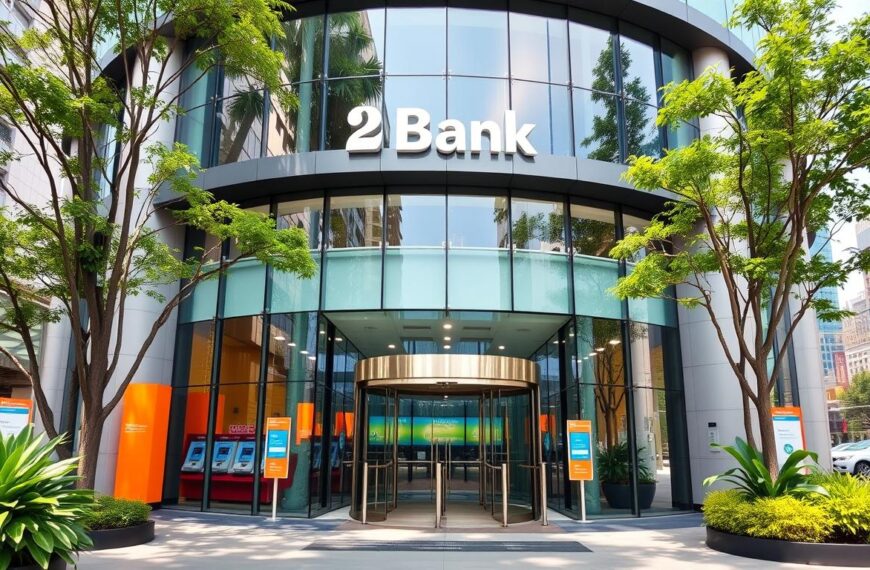Tax planning is key for those in the UK with high incomes. They face higher taxes and fewer allowances. With tax allowances frozen until 2028 and lower tax thresholds, smart planning is vital to save more and pay less in taxes1.
This article looks at ways high-income people can cut their taxes. It aims to help them save more and secure their financial future.
Knowing the UK’s tax brackets and income levels is crucial for high earners2. As the personal tax allowance drops for those earning over £100,000, planning ahead is more important than ever3. Looking into pension contributions, salary sacrifices, and tax-efficient investments can help save more. This way, high-income individuals can reach their long-term financial goals.
Understanding Tax Brackets and Income Thresholds in the UK
The UK tax system has different rates for different income levels4. For 2024/25, you don’t pay income tax on the first £12,570 you earn4. But, if you earn more, your allowance goes down by £1 for every £2 you make between £100,000 and £125,140. This can lead to a 60% tax rate for those with high incomes5.
Basic Rate vs. Higher Rate Tax Bands
In England, Wales, and Northern Ireland, there are three main tax bands4. The basic rate is 20% for income between £12,571 and £50,270. The higher rate is 40% for income from £50,271 to £125,1405. If you earn over £125,140, you pay 45% in the additional rate5.
The Impact of Frozen Tax Allowances
The personal allowance and higher rate threshold have been frozen until 20284. This could push more people into higher tax brackets as wages rise4. As incomes grow, more people might face the 40% and 45% tax rates on income over £125,1406.
Personal Allowance Reduction for High Earners
Those earning over £100,000 see their personal allowance decrease by £1 for every £2 earned above this4. This can lead to a 60% effective tax rate on income between £100,000 and £125,1405. In Scotland, the advanced rate is 45%, and the top rate is 48%, adding complexity for high-income earners5.
| Income Tax Bands | England, Wales, and Northern Ireland | Scotland |
|---|---|---|
| Personal Allowance | £12,570 at 0% | £12,570 at 0% |
| Basic Rate | £12,571 – £50,270 at 20% | £12,571 – £14,876 at 19%, £14,877 – £26,561 at 20% |
| Intermediate Rate | N/A | £26,562 – £43,662 at 21% |
| Higher Rate | £50,271 – £125,140 at 40% | £43,663 – £75,000 at 42% |
| Additional/Advanced Rate | Over £125,140 at 45% | £75,001 – £125,140 at 45%, Above £125,140 at 48% |
“The UK’s progressive tax system can be complex, with various thresholds and rates that high-income earners need to navigate carefully to minimise their tax liabilities.”
Understanding the UK tax system helps high-income individuals plan better456. They can use legal strategies to save on taxes.
Pension Contributions: The Ultimate Tax-Efficient Investment
Pension contributions are a smart way for high-income earners in the UK to save on taxes. The annual pension allowance has gone up to £60,000 for the 2024/25 tax year. This means you can put up to 100% of your salary into a pension, capped at £60,0007. If you’re a higher or additional rate taxpayer, you can get even more relief, up to 40% or 45% of what you contribute8.
Maximising Annual Allowance Benefits
The £60,000 annual pension allowance includes contributions from you, your employer, and private pensions7. If you earn over £260,000, your allowance will decrease by £1 for every £2 you earn above that. This can drop to £36,000 if you earn £312,000 or more7. You can also use unused allowances from the past three years in the current year, helping you plan for retirement more efficiently8.
Salary Sacrifice Arrangements
Salary sacrifice plans can cut down your taxable income and National Insurance. By putting some of your salary into a pension, you can save even more on taxes.
Tax Relief Opportunities for Different Tax Brackets
If you earn between £100,000 and £125,140, pension contributions can give you up to 60% tax relief. This is because you can reclaim part of your lost personal allowance8. Also, charitable donations through gift aid can get a 25% tax top-up from the government, with no limit on how much you can give8. Investing in start-ups through schemes like SEIS, EIS, and VCT can also save you up to 50% in taxes9.
Remember, the advice here is not financial advice. Always talk to a qualified financial advisor before making any big decisions about pensions or investments8.
| Tax Saving Strategy | Tax Relief | Key Details |
|---|---|---|
| Pension Contributions | Up to 45% tax relief |
|
| Salary Sacrifice | Reduced taxable income |
|
| Charitable Donations | 25% tax top-up |
|
| Investment Schemes | Up to 50% tax relief |
|
Best Tax Saving Strategies for High Income Earners
High-income earners in the UK can use tax-efficient strategies to save more and pay less tax. One top method is to put more into tax-advantaged accounts like ISAs10.
The ISA allowance for 2024/2025 is £20,000, offering tax-free growth and income11. Also, smart dividend tax planning can help use the £500 dividend tax allowance10.
Managing capital gains tax wisely is key, with a £3,000 annual exemption for 2024/2025. Higher-rate taxpayers face 28% on property gains and 20% on other assets. Spreading sales across years can make the most of the exemption11.
Another strategy is salary sacrifice, where employees reduce taxable income by putting some salary into a pension10. But, it might affect mortgage borrowing, so consider the pros and cons.

By using these tax-efficient strategies, high-income earners can greatly improve their financial future and keep more of their earnings.
Maximising Pension Contributions
Pension contributions are a top way for high earners to cut their tax10. Basic-rate taxpayers get 20% tax relief, while higher-rate and additional-rate taxpayers can claim up to 40% and 45% respectively10. The pension allowance has risen to £60,000, offering more tax savings10.
But, those with incomes over £260,000 might see their pension allowance drop to £10,00010. High earners should get professional advice to make the most of their pension while following tax rules.
| Tax Rate | Tax Relief on Pension Contributions |
|---|---|
| Basic Rate (20%) | 20% |
| Higher Rate (40%) | 40% |
| Additional Rate (45%) | 45% |
Non-earners get 20% tax relief on pension contributions up to £2,880, making the total contribution limit £3,60010. A SIPP can offer extra tax benefits, like avoiding UK tax on income and capital gains10.
By planning and optimising pension contributions, high-income earners can lower their tax and secure their financial future1011.
Investment Vehicles and Tax-Efficient Savings Options
The UK has many investment vehicles and tax-efficient savings options. These help high-income earners get more returns and pay less tax. Options include Individual Savings Accounts (ISAs), Venture Capital Trusts (VCTs), and Enterprise Investment Schemes (EIS)12.
ISA Allowances and Types
Over 12 million ISA accounts were opened in the 2020/21 financial year12. ISAs come in different types, each for different savings goals. Cash ISAs offer tax-free interest, while Stocks and Shares ISAs can give higher returns through investments.
Lifetime ISAs help with buying a first home or saving for retirement, with a 25% government bonus13. Junior ISAs let parents save for their children’s future. From April 2024, you can contribute to multiple ISAs of the same type each year13.
Dividend Tax Planning
High-income earners should plan for dividend tax to get the most from their investments. The £500 dividend allowance means you can get tax-free dividend income. But, dividends over this amount are taxed based on your income band13.
Thinking about the tax on dividend income can help you manage your portfolio better. This way, you can pay less tax.
Capital Gains Tax Management
Managing capital gains tax (CGT) is key for high-income earners. The annual CGT exemption can reduce gains, and timing when you sell assets can lower your tax bill. Also, passing assets to a spouse or civil partner can use both of your CGT allowances13.
FAQ
What is tax planning and how can it help high income earners in the UK?
Tax planning means making smart financial choices to lower your tax bill. It helps high earners find ways to pay less tax and save more. It also helps plan for the future.
What are the different income tax bands and rates in the UK?
The UK has a progressive tax system. There are different tax bands and rates. The personal allowance is £12,570. Income between £12,571 and £50,270 is taxed at 20%. Income between £50,271 and £125,140 is taxed at 40%. Anything over £125,140 is taxed at 45%.
How can high income earners use pension contributions to reduce their tax burden?
Pension contributions offer big tax benefits for high earners. The annual allowance for pension contributions went up to £60,000 in April 2023. Higher and additional rate taxpayers can get up to 40% or 45% tax relief on contributions. Salary sacrifice can also reduce taxable income and National Insurance contributions.
What other tax-efficient strategies can high income earners employ?
High income earners can use many strategies to lower their tax. They can maximise ISA allowances and manage dividend tax planning. They can also plan for capital gains tax.
Spreading asset sales over tax years and using spouse transfers are good strategies. Salary sacrifice schemes can also help.
What are the different types of ISAs available and how can they benefit high income earners?
There are many ISA types for different needs. Cash ISAs offer tax-free interest. Stocks and Shares ISAs can give higher returns. Lifetime ISAs help with first-time home buying or retirement savings. Junior ISAs are for children’s savings.
From April 2024, you can pay into multiple ISAs of the same type each year. This adds flexibility for tax-efficient savings.


















Hi there! This post could not be written any better!
Reading through this post reminds me of my previous room mate!
He always kept talking about this. I will forward this write-up to him.
Pretty sure he will have a good read. Many thanks for sharing!
You have made some good points there. I checked
on the internet for more info about the issue and found most individuals will go along with your views on this site.
Everything is very open with a very clear
clarification of the challenges. It was truly informative.
Your website is useful. Many thanks for sharing!
Excellent site. Lots of helpful information here. I’m sending it
to several pals ans additionally sharing in delicious.
And of course, thanks for your effort!
Thanks for finally writing about > Best Tax Saving
Strategies for High Income Earners: Maximize Your Savings < Loved it!
I could not refrain from commenting. Perfectly written!
Aw, this was an incredibly good post. Taking the time and actual effort to create a really
good article… but what can I say… I hesitate a lot and never manage to
get anything done.
Very rapidly this web site will be famous amid all blog users, due to it’s good articles
Appreciate the recommendation. Let me try it out.